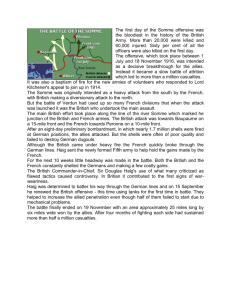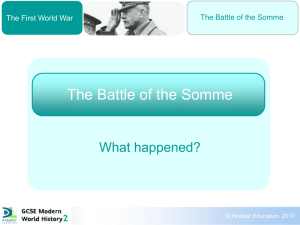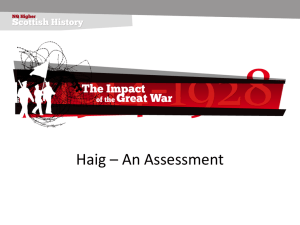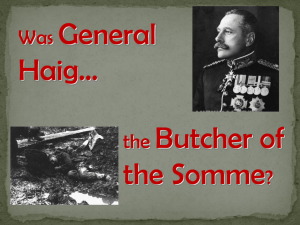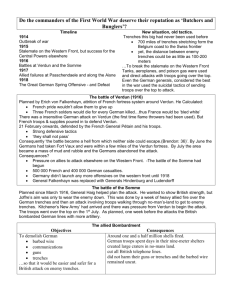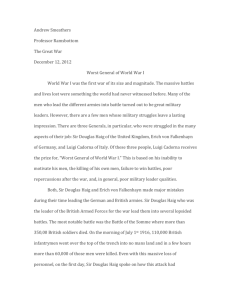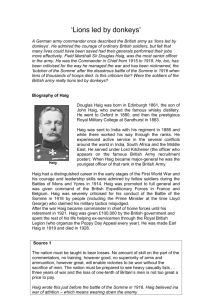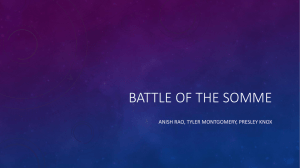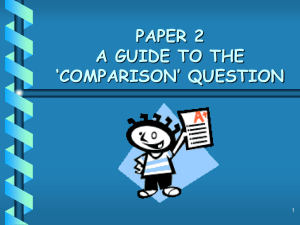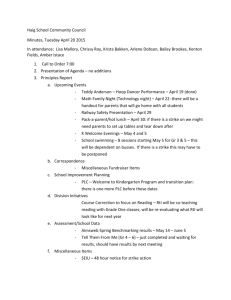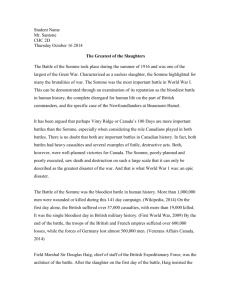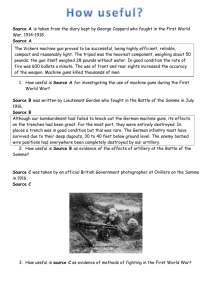General Haig & The Somme: Year 9 History Lesson Plan
advertisement
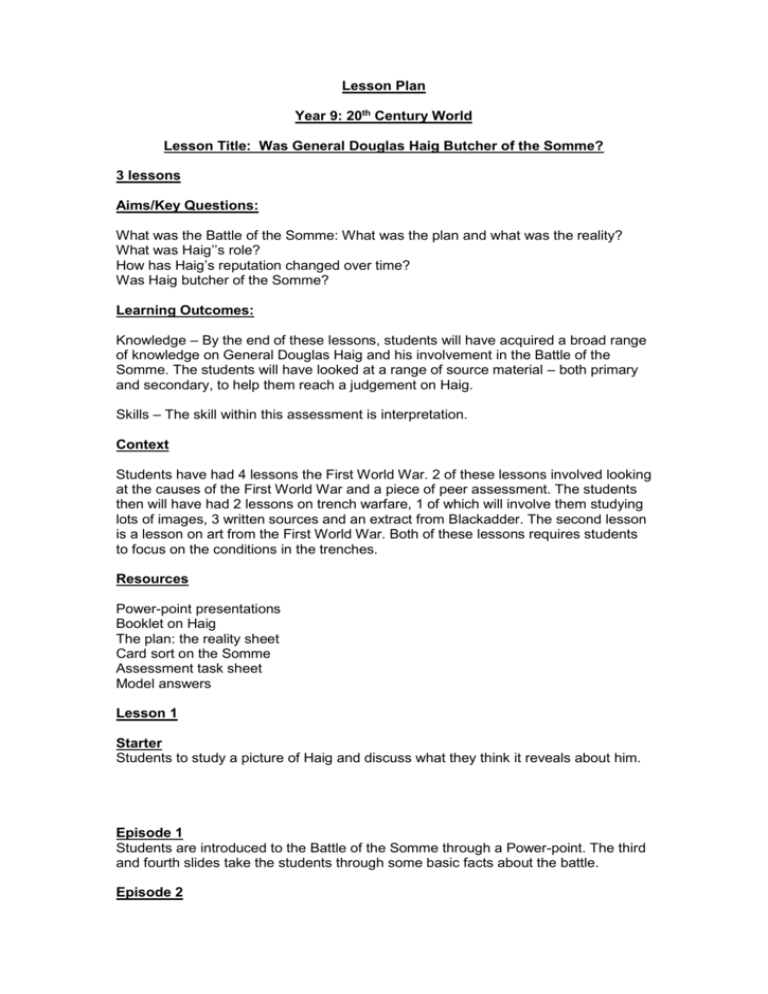
Lesson Plan Year 9: 20th Century World Lesson Title: Was General Douglas Haig Butcher of the Somme? 3 lessons Aims/Key Questions: What was the Battle of the Somme: What was the plan and what was the reality? What was Haig’’s role? How has Haig’s reputation changed over time? Was Haig butcher of the Somme? Learning Outcomes: Knowledge – By the end of these lessons, students will have acquired a broad range of knowledge on General Douglas Haig and his involvement in the Battle of the Somme. The students will have looked at a range of source material – both primary and secondary, to help them reach a judgement on Haig. Skills – The skill within this assessment is interpretation. Context Students have had 4 lessons the First World War. 2 of these lessons involved looking at the causes of the First World War and a piece of peer assessment. The students then will have had 2 lessons on trench warfare, 1 of which will involve them studying lots of images, 3 written sources and an extract from Blackadder. The second lesson is a lesson on art from the First World War. Both of these lessons requires students to focus on the conditions in the trenches. Resources Power-point presentations Booklet on Haig The plan: the reality sheet Card sort on the Somme Assessment task sheet Model answers Lesson 1 Starter Students to study a picture of Haig and discuss what they think it reveals about him. Episode 1 Students are introduced to the Battle of the Somme through a Power-point. The third and fourth slides take the students through some basic facts about the battle. Episode 2 Students are then required to focus on the plan and the reality of the Battle. They will be given a worksheet with this explained and a diagram of this on the Power-point. Students have to create 2 mind-maps which outline the plan and the reality of the battle. Plenary Students are asked to consider why they think the Battle of the Somme was a turning point. They must also consider why this would have affected people’s opinions on Haig. Lessons 2 and 3 Starter of lesson 2 Students to read the fact-file on Haig on the front of the booklet and explain what they think it reveals about him. Episodes for lessons 2 and 3 Students to begin reading through the booklet on Haig. There are activities that can be completed either orally or as formal written answers. There is also a card sort to be completed that looks at what went wrong at the Battle of the Somme. Students are given a selection of cards and they have to make up headings (4-6 headings), to put the cards under. (Example headings could be poor leadership, faulty equipment etc). The students then have to write out the headings in their poor and put one example under each heading, using the cards to help them (they must summarise the card, not copy it). The card sort can be done at any point during lessons 2 and 3. It depends on how quickly the students read through the booklet. At the end of the booklet there is a source from Blackadder – play the clip (it’s the last episode in the series Blackadder Goes Forth) to accompany the source. Students then to be given the assessment task sheet. This explains the task and outlines the levels and what is needed to reach levels 4-7. There is also a set of model answers which can either be used before the task or after. Once the students have worker their way through the booklet and have looked at the assessment task sheet they should be ready to begin the assessment. The quality of their work, especially their ability to explain interpretations and Haig’s reputation, will very much depend on how much in-put you have given them during these 2 lessons. I would recommend spending a fair amount of time on the booklet, discussing sources and reputation and also trying to get across the idea that world events since the Somme have affected Haig’s reputation and opinions on him vary hugely, depending on background, experience etc. I give some lesson time (sometimes a whole lesson) to begin the assessment. This enables me to iron out teething problems when the students begin the assessment. This may or may not be appropriate.
